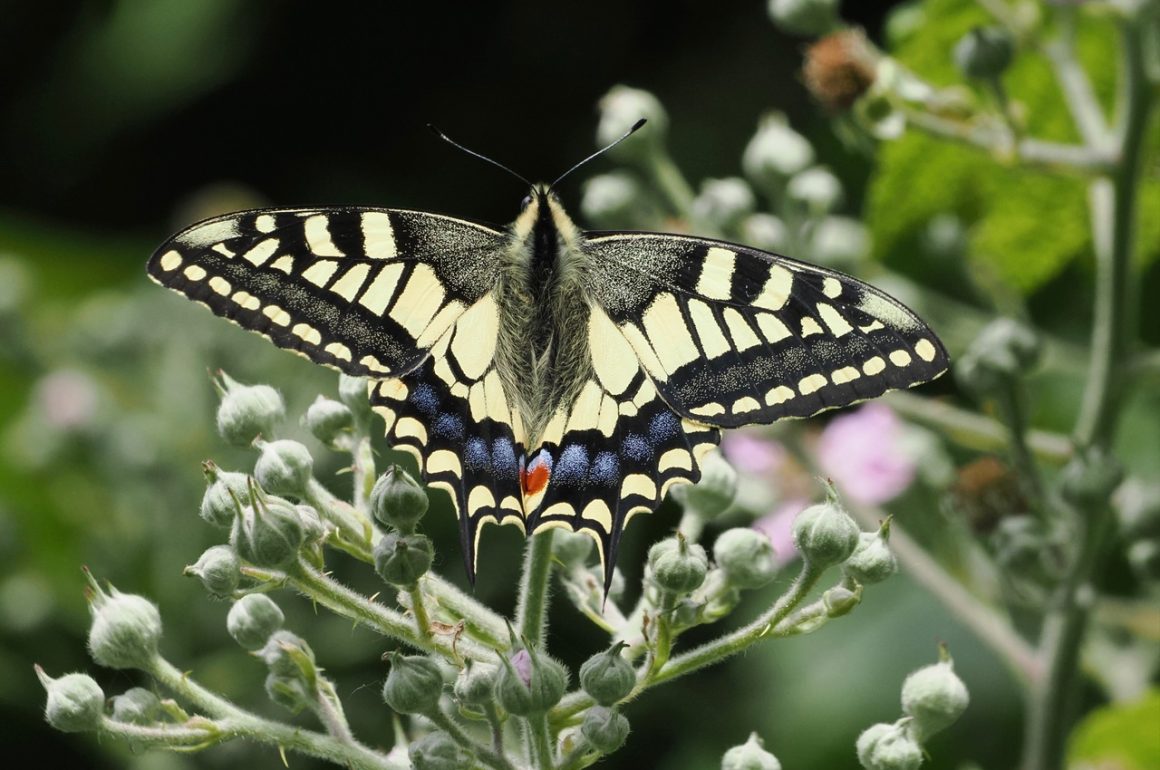
It’s mid June, and the summer birding doldrums have set in. The month with the longest days – it doesn’t get dark here until about 10pm – is never great for birding. Most of our summer breeders are busy rearing young, so the mornings are now relatively quiet, with not a lot of song. Our local Cuckoos are still singing, but they will be heading south before the end of the month. There’s not a lot of chance of finding unusual migrants, while the great majority of our waders (or shore birds if you prefer) are away on their arctic breeding grounds. Our resident breeding ducks have already started to moult from their breeding finery into their summer eclipse plumage, so are looking decidedly scruffy.
There are compensations. This is the time off the year when warm summer evenings draw me out to look and listen for Nightjars on our Breckland heaths. On Tuesday night I went out to my local nature reserve, Knettishall Heath, two miles from home, to listen for them. Despite staying out until well after dark, I didn’t hear one, though a hunting barn owl was a compensation.

A Barn Owl hunting at Knettishall at dusk on a June evening
Last night (Wednesday) I went out again and tried a different part of the heath. No success, but on my way home I paused on the road by the main heath. I was driving an open-top car with the roof down, so I didn’t need to get out to listen. Not sooner had I stopped than, much to my surprise, I heard a Nightjar churring away. This was the area where I had listened the night before.
For North American readers I should explain that the Nightjar is the equivalent of a Nighthawk, and about the same size. It’s a bird of heaths and forest clearings, and is strictly crepuscular, so is seldom seen during the day unless flushed. The best way to locate one is by the male’s reeling song, which is known as churring. It’s far-carrying, with the pitch varying as the singing bird turns his head, while he can sing continuously for five minutes or more. For me it’s one of the magical sounds of high summer. I’ve yet to photograph a Nightjar satisfactorily, so no pictures I’m afraid.
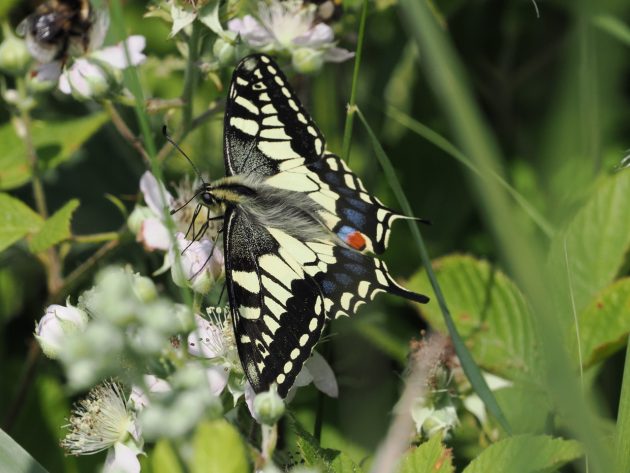
There are fewer than 60 species of butterflies that breed in the British Isles. The magnificent Swallowtail is one of the rarest, with only a small, restricted range in Norfolk
While June may not be good for birds, it is for butterflies. Here in the British Isles we have a mere 58 regular breeding species, compared with 264 in Italy. (The Netherlands are equally impoverished, while Finland can muster an impressive 110 species.) I’ve been interested in butterflies since my early teens, when I started collecting them. I still have butterflies I caught back in the 1960s; they are in a glass-fronted display cabinet hanging on my study wall, so I can see them as I write this. It’s a very long time since I last caught a butterfly, as modern cameras give a wonderful opportunity to photograph them instead.
It was a bid to see one of our rarest and most magnificent butterflies, the Swallowtail, that took me to Hickling Broad in the Norfolk Broads National Park earlier this week. After a week of unsettled weather the forecast was for sunshine, an essential for butterfly hunting. I reckoned that the sun would bring out the Swallowtails, and I was proved right. The British race of the Swallowtail, Papilio machaon britanicus, is a curious creature, for it breeds almost exclusively on Milk-parsley, which restricts its range to the Norfolk Broads, an extensive area of wetlands and reedbeds in East Anglia. In contrast the larger continental race of the Swallowtail, P.m.gorganus, has two broods compared with our butterfly’s one, and is both common and widespread. Migrant gorganus butterflies sometime reach southern England, where they have bred.
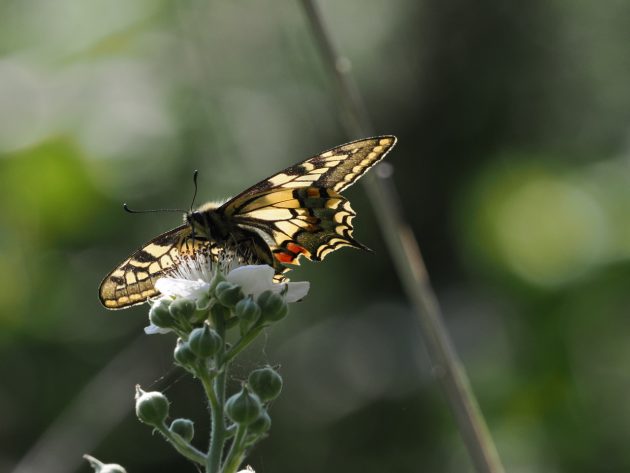
My hunch about the Swallowtails was right, for I’d only just left the visitor centre at Hickling (a reserve of the Norfolk Wildlife Trust) when I came across a freshly emerged individual nectaring on a bramble bush. Swallowtails often lose their tails soon after emerging – this butterfly was intact. Though active, seldom settling for long, it was co-operative, so I soon had lots of photographs. We went on to see seven or eight more, at least two of which were happy to be photographed. I now have enough pictures of Swallowtails never to need to photograph one again, but I’m sure I will, as they are irresistible.
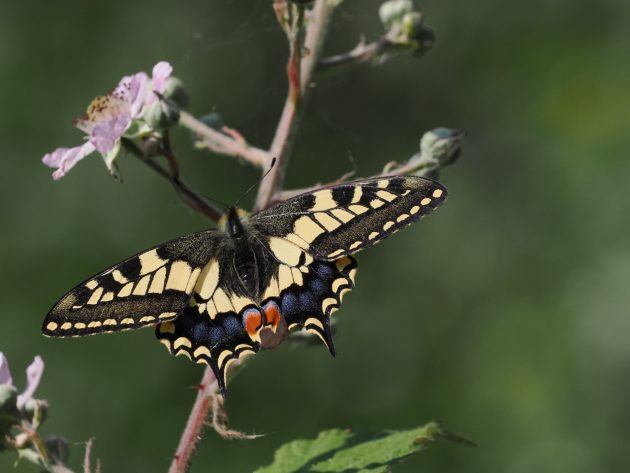
I find photographing Swallowtails irresistible
This is, of course, 10000 Birds, not 10000 Butterflies, so that’s enough about butterflies, though I might add that I also enjoyed good views of another Hickling special, the Norfolk Hawker dragonfly. In the bright sun these green-eyed dragonflies were hyper-active, never pausing long enough for me to take a photograph. Until recently they were restricted to the Norfolk Broads, like the Swallowtail, but in recent years they have started breeding in southern England, and even the Midlands.
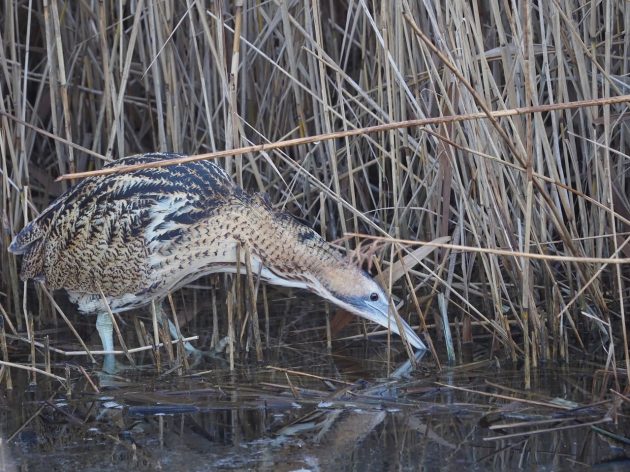
Bitterns are easier to hear than see
Hickling, with its extensive reedbeds, is also a great site for marshland birds. It was here, in 1911, that the pioneer nature photographer Miss E.L.Turner photographed a young Bittern at its nest, the first record of these birds nesting in Britain since 1886. Bitterns remain one of Hickling’s special birds, and though we failed to see any as we walked round the reserve, we did here one booming close by. The Bittern’s boom is one of the most far-carrying of bird sounds, and it’s claimed that under favourable conditions it can be heard as much as three miles away.
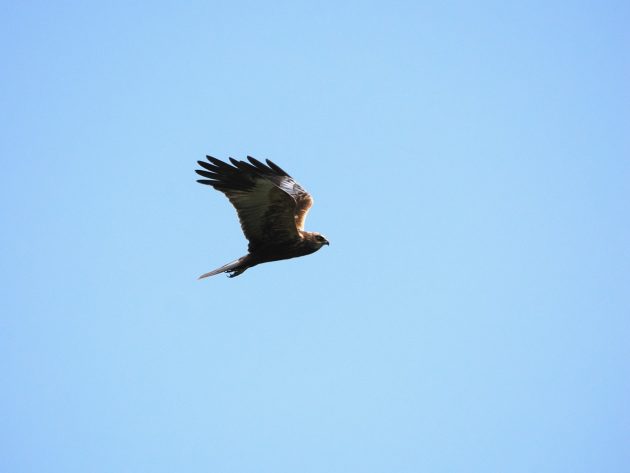
Male Marsh Harrier, a bird that’s impossible to miss at Hickling
Marsh Harriers have now become so widespread that I expect to see them on nearly every outing, but again Hickling has long been famed for this species, which was lost from England in the 19th century due to persecution. We saw several.
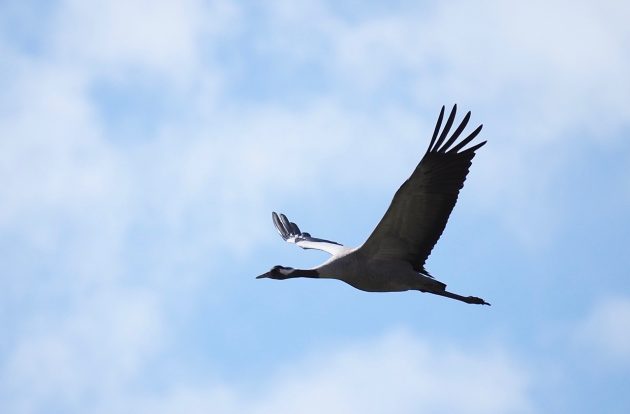
Common Crane, now well established as a breeding bird in the Norfolk Broads
Not unexpected, but good to see nevertheless, was a pair of Cranes, soaring up into the sky. Cranes started to breed in the Norfolk Broads in 1981, after an absence of several centuries. These impressive birds are now well established in the Broads, but in summer they are not easy to see, as if they have young they generally remain hidden in the reed beds.
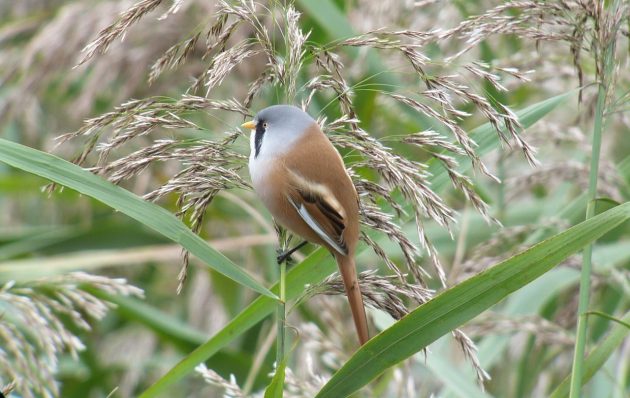
A male Bearded Tit, or Bearded Reedling. But doesn’t that look like a moustache, not a beard?
Bearded Tits are another Broadland special. More correctly called Bearded Reedlings, they are not tits at all, but are in a genus all of their own, Panurus. Bearded is a misleading name, as the male sports an impressive drooping moustache, not a beard, while the female lacks her mate’s grey head, and the moustache. These birds are much easier to hear than see, their distinctive pinging call revealing their presence: we saw several.
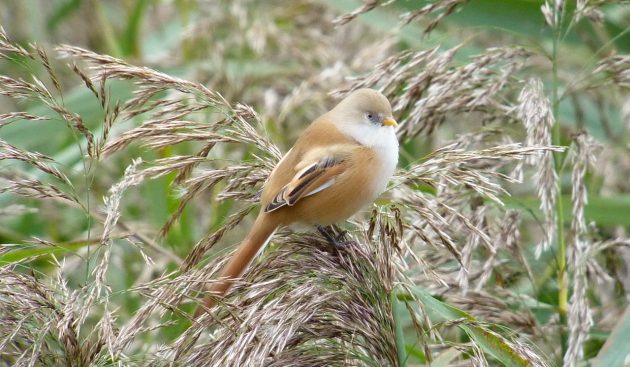
A female Bearded Tit. Note no beard (or even a moustache)
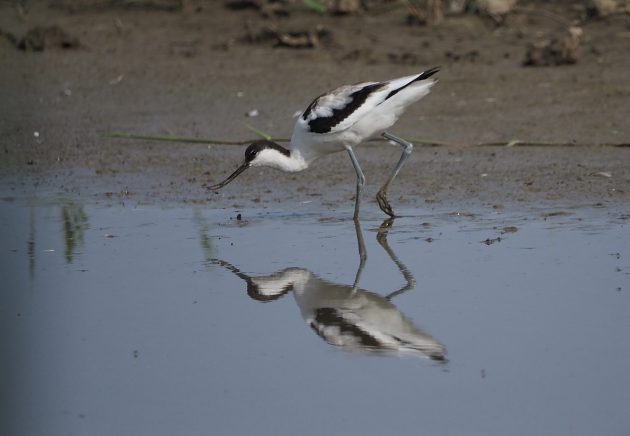
Avocets now breed on many Norfolk reserves, including Hickling
A vagrant Pectoral Sandpiper had been seen at Hickling the previous day, but we had been warned that is was elusive, so perhaps unsurpisingly we failed to find it, having to make do with the breeding waders: Avocet, Oystercatcher, Little Ringed Plover and Redshank. Adding a touch of the exotic were eight Great White Egrets, and a number of their smaller cousins, Little Egrets. They all added interest to a fine morning, but the Swallowtail was the star.
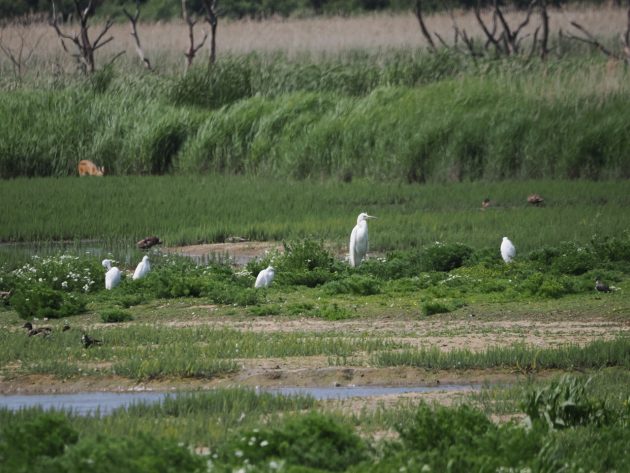


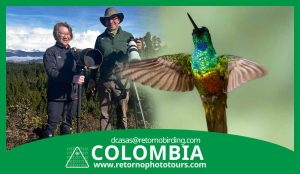

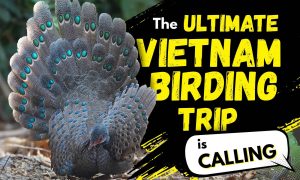


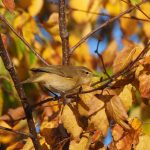
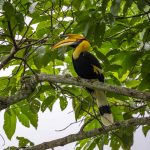


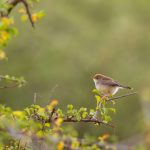
Reading about European birds and butterflies while waiting at Surabaya airport is interesting: despite the varied birdlife here I still envy your nightjars.
I am envious of those Swallowtails…great photos David !
I enjoyed reading this too although we have lots of different swallowtails in Uganda.